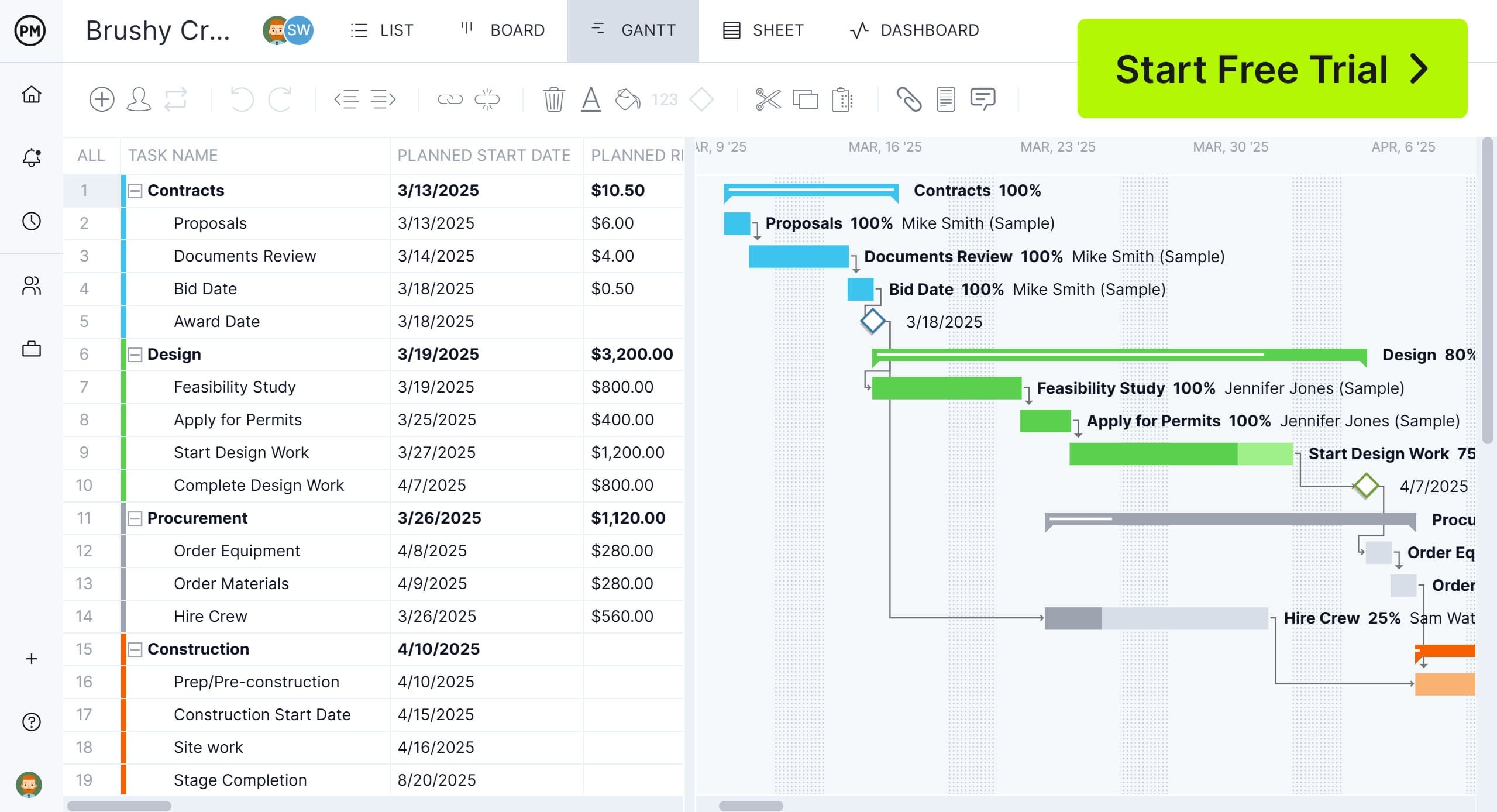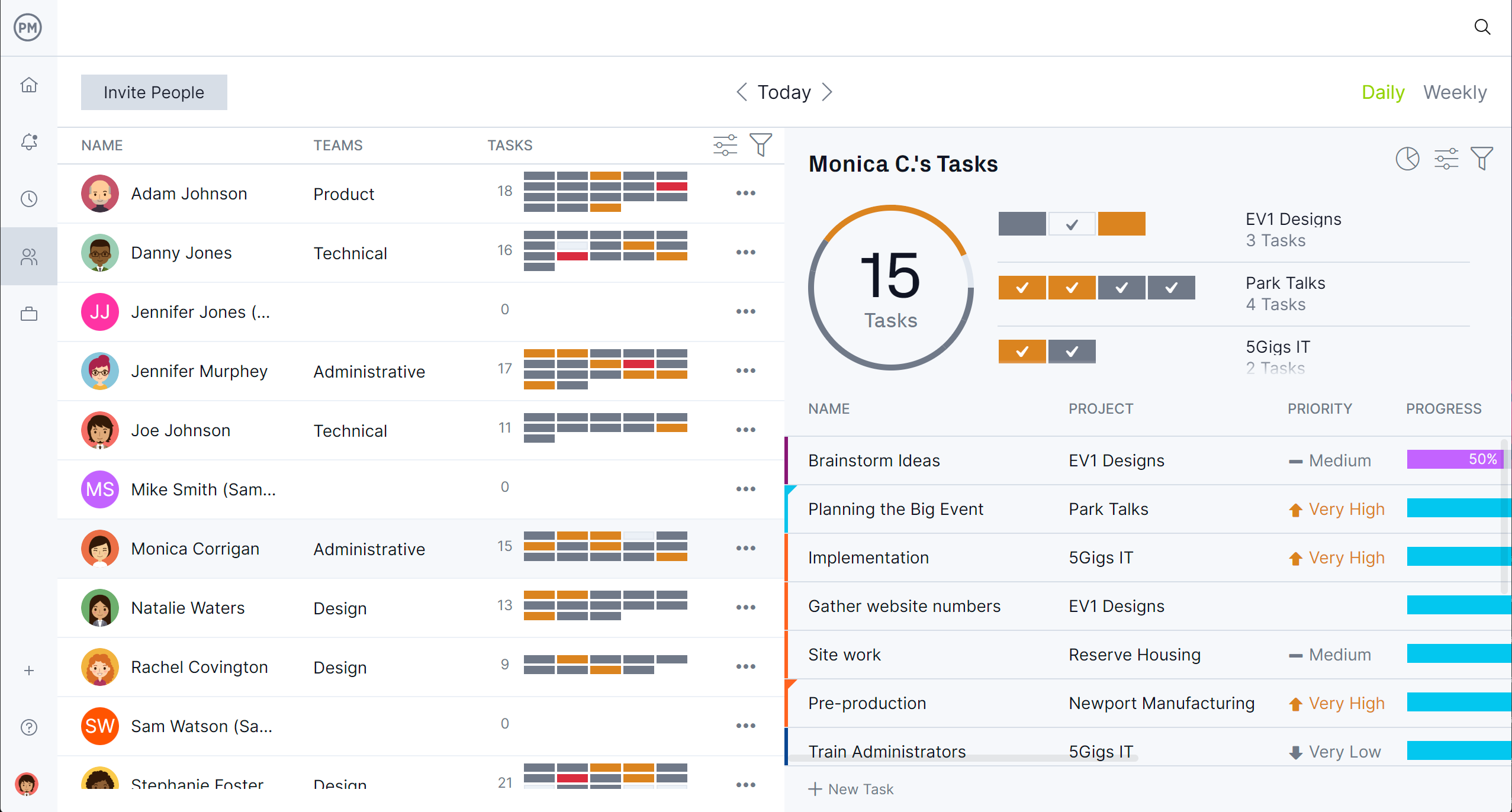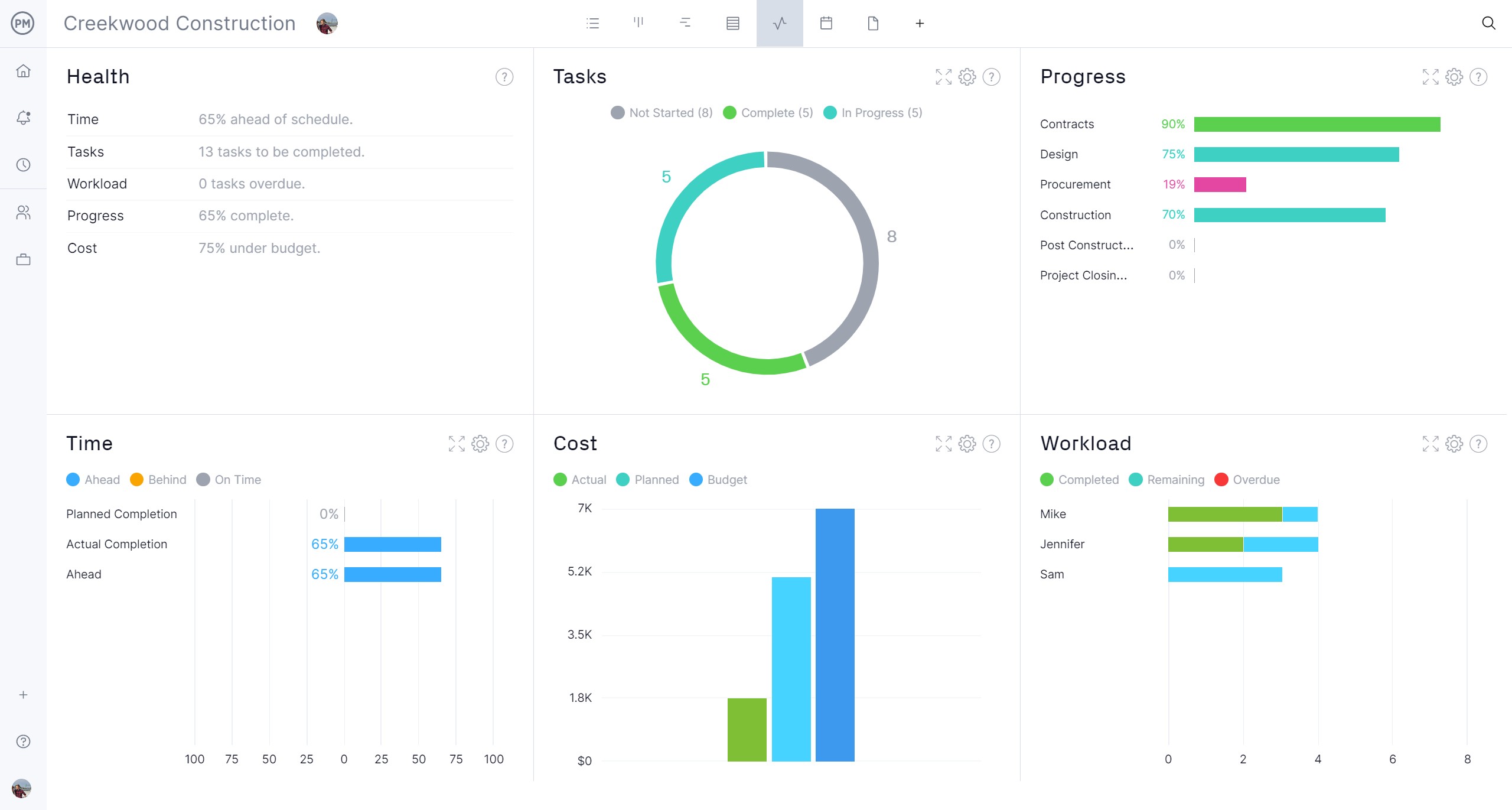Construction projects are unique. They tend to be long, complex and involve many different subcontractors who all work together. This has led to construction techniques and construction methods specific to the industry.
Let’s explore what constitutes the modern method of construction by defining the best innovative construction techniques. We’ll also compare these modern construction methods to traditional construction methods and show how templates and construction project management software help implement them.
What Types of Construction Methods Are There?
Construction methods and construction techniques refer to the various processes, materials and strategies used to design, plan and execute building projects efficiently. These methods ensure structural integrity, cost-effectiveness and sustainability while meeting project specifications.
Construction methods are the approaches used to assemble a structure. This can include traditional construction, such as brick and mortar or wood-framed building, prefabrication, modular construction, steel frame construction and precast concrete construction.
Construction techniques focus on the specific practices that improve efficiency and quality. These include framework and shuttering, post-tensioning, green building techniques, 3D printing in construction and tunnel boring.
Whatever construction method or construction technique is used, it is improved by construction project management software. ProjectManager is award-winning construction project and portfolio management software that has robust Gantt charts to schedule tasks, resources and costs. But it goes beyond that to link all four types of task dependencies to avoid cost overruns, filters for the critical path to identify essential tasks and slack, plus sets a baseline to track progress in real time. Get started with ProjectManager today for free.

Traditional Construction Methods
Traditional construction methods have been used for centuries and are foundational in modern building projects. These techniques rely on well-established materials such as brick, wood, stone and concrete to create durable structures. Each method has unique advantages, making them suitable for various buildings and environments.
1. Brick and Mortar Construction
This construction method involves laying bricks systematically and binding them with mortar to create sturdy walls and structures. It’s widely used for residential and commercial buildings due to its durability, fire resistance and cost-effectiveness.
2. Timber Framing
Timber framing is a construction technique that utilizes wooden beams and posts to form a structural framework. It is known for its flexibility, aesthetic appeal and ability to withstand seismic activity, making it popular in traditional and modern homes.
3. Stone Masonry
Stone masonry involves using naturally occurring or cut stones, bound together with mortar, to construct walls, buildings, monuments and other types of construction projects. This technique is valued for its strength, longevity and resistance to weathering and fire.
4. Cast-in-Place Concrete
In this construction method, concrete is poured into molds or formwork on-site, allowing it to harden in place. It provides high structural integrity and is commonly used for foundations, walls and large infrastructure projects like bridges and tunnels.
5. Load-Bearing Wall Construction
Load-bearing walls support the structural weight of a building, transferring loads from the roof and upper floors to the foundation. This method is commonly used in masonry and concrete structures, providing stability and reducing the need for additional support beams.
Traditional construction methods continue to be essential in the industry, offering time-tested solutions for strong, reliable and aesthetically pleasing structures.
Modern Methods of Construction
Modern construction methods have revolutionized the building industry by improving efficiency, sustainability and cost-effectiveness. These innovative techniques integrate advanced materials, prefabrication and digital technology to enhance speed and precision in construction. As the industry evolves, these methods are increasingly adopted to meet the demands of complex, sustainable and high-performance buildings.
6. Modular Construction
Modular construction involves manufacturing building components or entire sections off-site in a controlled factory environment before assembling them on-site. This method reduces construction time, minimizes waste and improves quality control while allowing for greater design flexibility.
7. Twin Wall Technology
Twin wall technology combines precast concrete panels with an in-situ concrete core, creating a robust structural system. It enhances speed, precision and structural strength while reducing labor costs and improving thermal insulation.
8. Flat Slab Construction
Flat slab construction eliminates traditional beams by directly supporting reinforced concrete slabs on columns. This method offers increased flexibility in design, faster construction and efficient use of space, making it ideal for high-rise buildings and commercial structures.
9. 3D Printing in Construction
3D printing in construction uses large-scale printers to create building components or entire structures layer by layer with materials like concrete or composites. This cutting-edge construction method significantly reduces labor costs, speeds up the construction phase and allows for innovative, customizable designs.
10. Steel Frame Construction
Steel frame construction utilizes a network of steel columns and beams to form the structural skeleton of a building. It is widely used for skyscrapers and industrial buildings due to its strength, durability and ability to withstand seismic activity and extreme weather conditions.
11. Glass Fiber Reinforced Concrete (GFRC)
GFRC is a lightweight yet strong composite material made from cement, glass fibers and polymers. It offers superior durability, resistance to cracking and design versatility, making it popular for façades, decorative panels and architectural elements.
12. Self-Healing Concrete
Self-healing concrete is an innovative material that contains bacteria or other chemical agents that activate when cracks form, automatically repairing the damage. This technology extends the lifespan of structures, reduces maintenance costs and enhances sustainability in construction.
Modern methods of construction continue to reshape the industry by increasing efficiency, reducing waste and promoting sustainability. These advancements are crucial for meeting the growing demand for resilient and eco-friendly infrastructure.

Sustainable Construction Methods
Sustainable construction methods focus on minimizing environmental impact, improving energy efficiency and utilizing eco-friendly materials. These techniques aim to reduce carbon footprints, promote resource conservation and create healthier living and working spaces. By incorporating renewable resources, energy-efficient designs and waste reduction strategies, sustainable construction plays a vital role in shaping a greener future for the industry.
13. Green Roofs and Living Walls
Green roofs and living walls integrate vegetation into building structures, providing natural insulation, reducing heat absorption and improving air quality. They help manage stormwater runoff, lower energy consumption and enhance urban biodiversity.
14. Passive Solar Building Design
Passive solar design optimizes a building’s orientation, materials, site planning, and layout to maximize natural heating, cooling and lighting. This method reduces reliance on mechanical systems, cutting energy costs while improving indoor comfort.
15. Cross-Laminated Timber (CLT)
CLT is a sustainable wood construction material made by layering timber in perpendicular directions and bonding them together. It offers high strength, thermal efficiency and a lower carbon footprint compared to traditional concrete and steel.
16. Rammed Earth Construction
Rammed earth construction involves compressing natural soil, sand and stabilizers into solid walls, creating a durable and thermally efficient structure. This method is environmentally friendly, utilizing abundant and locally available materials.
17. Recycled and Upcycled Materials
Sustainable construction incorporates recycled and upcycled materials such as reclaimed wood, recycled steel and repurposed bricks to reduce waste and conserve construction resources. This approach minimizes landfill contributions while maintaining structural integrity.
18. Insulating Concrete Formwork (ICF)
ICF consists of interlocking foam blocks filled with reinforced concrete, providing excellent insulation and durability. This method enhances energy efficiency, reduces heating and cooling costs and improves soundproofing.
By adopting these sustainable construction methods, the industry moves toward eco-friendly and energy-efficient buildings that align with environmental responsibility and long-term cost savings.
Free Construction Project Management Templates
As promised, there are free project management templates available to help facilitate these construction methods and construction techniques. Download over 100 free project management templates for Excel and Word from our site. They cover all aspects of managing a project across multiple industries. Here are some free construction templates.
Construction Budget Template
Download this free construction budget template for Excel to more accurately estimate, track and manage expenses associated with a construction project. It helps project managers, contractors and stakeholders ensure that all costs are accounted for and controlled throughout the project lifecycle.
Construction Estimate Template
Use this free construction estimate template for Excel to calculate and outline the projected costs of a construction project. It helps contractors, project managers and clients better understand the expenses involved before construction begins and leads to more accurate budget forecasts.
Construction Schedule Template
A construction schedule template is a pre-designed tool used to plan, organize and track the timeline of a construction project. Download this free construction schedule template for Excel and help project managers, contractors and stakeholders outline key tasks, deadlines, dependencies and milestones to ensure smooth project execution.
How to Manage Construction Projects With ProjectManager
Again, it doesn’t matter the construction method or construction technique used, project management software is the right tool for the job. Yes, construction templates can manage projects, but they aren’t as effective or efficient. Time and money are key metrics and templates are more likely than software to eat into a schedule or a general contractor’s profit margin.
ProjectManager is award-winning construction project management software that avoids those pitfalls by scheduling on Gantt charts, executing on kanban boards and task lists while managing and monitoring costs, resources and more to keep projects delivered on time and meeting quality expectations.
Keep Crews Productive By Managing Resources
Gantt charts schedule human and nonhuman resources, but before assigning those tasks, the team must be onboarded to the software. When doing this, general contractors can set their availability, including pay rates and skill sets, to ensure the right person is assigned to the right task at the right time. To view resource allocation across all projects, visit the color-coded workload chart. It makes it easy to see who is overallocated or underutilized.
Then, balance the team’s workload from that page and keep everyone working at capacity without threatening burnout. The team page gives managers a daily or weekly overview of team activity. It can be filtered by priority or progress and tasks update right from that page.

Track Costs, Time and More With Real-time Dashboards and Reports
There are more project metrics than just resources to monitor to complete the project as planned. For a high-level overview, use the real-time project or portfolio dashboards. They’re collecting live data automatically and displaying it on easy-to-read graphs and charts that show time, tasks, costs, workload and more.
To get more details, use our reports, which can be generated with a keystroke. Reports on project or portfolio status, variance, timesheets, workload and more can be filtered to focus on key data points or more general information that can be shared with stakeholders to keep them updated. Even our secure timesheets help stay on budget by tracking labor costs.

Related Construction Project Management Content
There’s more to construction project management than construction methods and construction techniques. For those interested in further learning about the industry, below are links to recently published articles on the construction progress, phases, documents and more.
- The Construction Process Explained Step-by-Step
- 10 Types of Construction Projects with Examples
- Construction Phases: Documentation, Templates & Steps
- 32 Construction Documents (Templates Included)
- Construction Project Delivery Methods with Pros & Cons
- Construction Management: Process, Key Areas and Roles
ProjectManager is online project and portfolio management software that helps construction crews stay connected, whether they’re in the office or on the job site. They can share files, comment at the task level and stay updated with email and in-app notifications. Get started with ProjectManager today for free.



